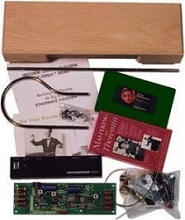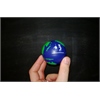Last year ThereminWorld posted about a school teacher who was raising funds to get a theremin for his classroom. The response from the theremin community was great and he was able to get an instrument for his students.
I can think of no better way to celebrate Leon Theremin's birthday (Aug. 15th) then by sharing that teacher's story.
By Mr. Ryan DaWalt, P.S. 134 George Bristow, Bronx, NY
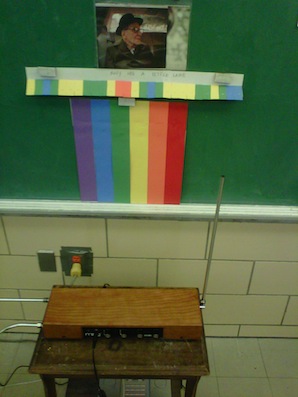
My students do not speak the same languages or agree on acceptable personal space issues or responses. In my five years at this school, I have learned to utilize two functions of human response to elevate interest in topics: humor and fascination. Seeing or experiencing something strange or funny incites a unified field for learning - it excites them with joy.
When I found out about the theremin it was definitely fascinating and I hoped to be able to explore some of what Prof. Theremin did in his work: the relationships between color, space, and music.
I originally conceived of it as a way for students to relate phonemes to letter blends. Having never used a theremin I found this to be to difficult. I then began using the instrument by allowing pre-kinder and kindergarden students to use the theremin freestyle at the end of my lessons on color. This persisted for about a week.
After I put the Theremin away, students began asking about it and wanted to play it again. Having gathered some indication as to what a student of pre-kinder and kindergarden age was capable of with the machine, I decided to be a bit more scientific in my approach to it's introduction and use.
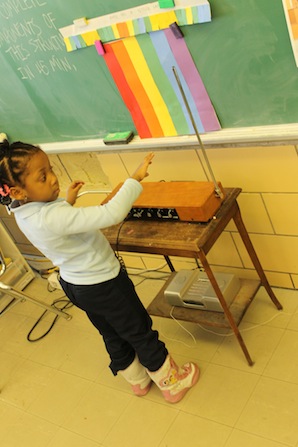
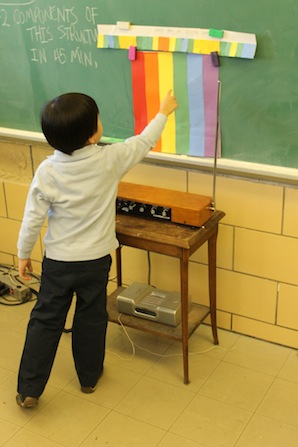
I had developed a color spectrum chart for my own purposes as a way to relate sound to a tangible source and I decided to try to compose simple known tunes that could be 'read' in a 1 to 1 sequence using this pitch to color chart that I had developed. I related high pitch closest to the vertical antenna to purple and low pitch closer to the volume antenna to red and the steps in between follow.
I had the students do a drawing of sound emanating from the theremin using the color spectrum as an expression of the sounds heard. Next to that we did a drawing of white light passing through the rainbow and breaking into its parts. I then show an image of Leon Theremin and introduce the theremin as a machine that turns physical motion into sound, and relate the position of the student's hand to a color on the chart behind the theremin.
We talk about how light and sound both travel as a wave and that each wave has a specific shape that relates to pitch and color. It is easy for the students to understand this when I demonstrate. Finally, I introduce pieces of paper that I have arranged in order of a specific size and in a specific order. When the student points at the spectrum chart positioned behind the theremin in the order I have arranged- songs such as 'Mary Had a Little Lamb' can be carved out of the air. I then allow students to go back to freestyle playing and introduce the volume control.
I am excited to share with my students the elemental relationship that exists between the material and the immaterial as well as color and sound vibration. By associating color with sound, students can relate colors to sound, make line drawings to sound, and see and hear a real relationship between refracted spectral light and the varied pitch of a tone. I am slowly making adjustments as I watch them use the theremin and it has become an ongoing part of my class. This hands-on introduction to basic physics and color theory is a leap forward in arts education by generating a more holistic understanding of science and the arts.
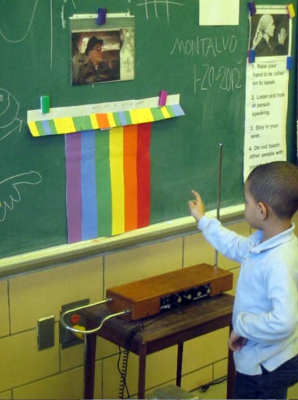
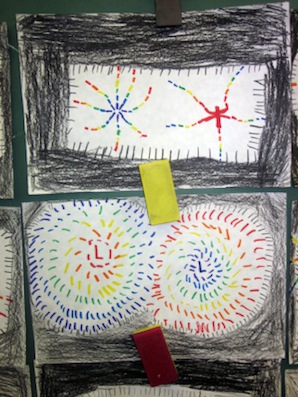
(photos by Ryan DaWalt)


